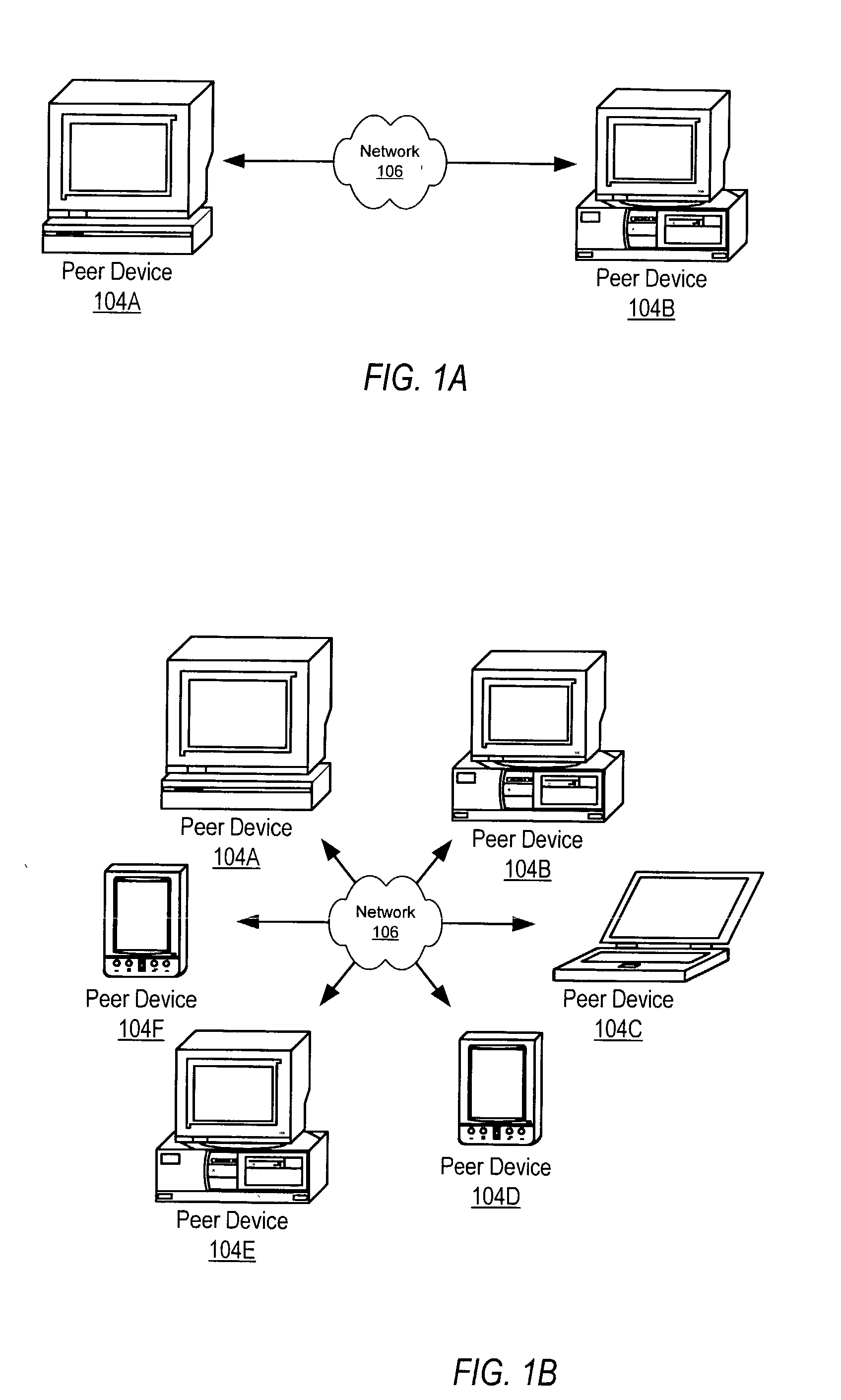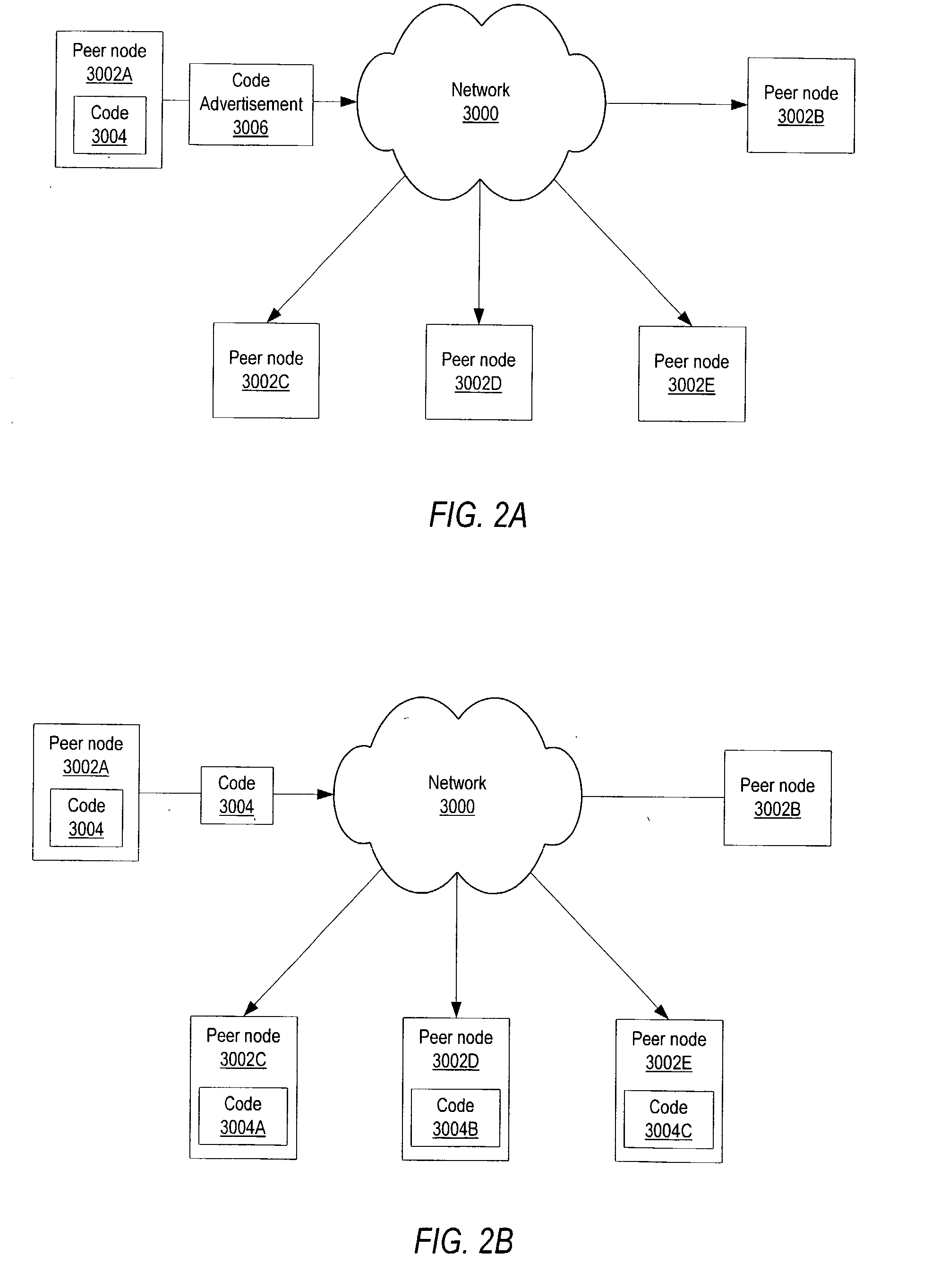System and method for submitting and performing computational tasks in a distributed heterogeneous networked environment
a distributed heterogeneous network environment and computational task technology, applied in data switching networks, multi-programming arrangements, instruments, etc., can solve the problems of increasing difficulty in finding useful information in real time, no single search engine or portal can locate and catalog the ever-increasing amount of information, and the vast underutilization of resources
- Summary
- Abstract
- Description
- Claims
- Application Information
AI Technical Summary
Problems solved by technology
Method used
Image
Examples
Embodiment Construction
[0069] Embodiments of a system and method for submitting and performing computational tasks in a distributed heterogeneous networked environment (which, for simplicity, may be referred to as the distributed computing mechanism) are described. Embodiments may allow tasks to be submitted by users and run in parallel on a network of heterogeneous computers implementing a variety of operating environments (e.g. UNIX-based environments, PC-based systems, cell phones, etc.). One embodiment enables users (e.g. software developers) to submit tasks to a cluster or group of peer nodes participating in a peer-to-peer environment on a network. In one embodiment, tasks may preferably be submitted to the cluster or group for execution from any peer node (or, in one embodiment, any other node) connected to the network.
[0070] A peer node may manifest in the form of a processor, a process or a device. A peer node may be anything with a digital heartbeat including sensors, servers, PCs, computers up ...
PUM
 Login to View More
Login to View More Abstract
Description
Claims
Application Information
 Login to View More
Login to View More - R&D
- Intellectual Property
- Life Sciences
- Materials
- Tech Scout
- Unparalleled Data Quality
- Higher Quality Content
- 60% Fewer Hallucinations
Browse by: Latest US Patents, China's latest patents, Technical Efficacy Thesaurus, Application Domain, Technology Topic, Popular Technical Reports.
© 2025 PatSnap. All rights reserved.Legal|Privacy policy|Modern Slavery Act Transparency Statement|Sitemap|About US| Contact US: help@patsnap.com



